Hyundai Kona vs VW Golf – Which one offers the better deal?
Compare performance, boot capacity, efficiency and price at a glance.
Find out which car is the better choice for you – Hyundai Kona or VW Golf?
Costs and Efficiency:
Looking at overall running costs, both models reveal some interesting differences in everyday economy.
Hyundai Kona has a barely noticeable advantage in terms of price – it starts at 23100 £, while the VW Golf costs 25200 £. That’s a price difference of around 2138 £.
Fuel consumption also shows a difference: VW Golf manages with 1.10 L and is therefore convincingly more efficient than the Hyundai Kona with 4.60 L. The difference is about 3.50 L per 100 km.
As for range, the Hyundai Kona performs decisively better – achieving up to 514 km, about 371 km more than the VW Golf.
Engine and Performance:
Power, torque and acceleration say a lot about how a car feels on the road. This is where you see which model delivers more driving dynamics.
When it comes to engine power, the VW Golf has a clearly perceptible edge – offering 333 HP compared to 218 HP. That’s roughly 115 HP more horsepower.
In acceleration from 0 to 100 km/h, the VW Golf is convincingly quicker – completing the sprint in 4.60 s, while the Hyundai Kona takes 7.80 s. That’s about 3.20 s faster.
In terms of top speed, the VW Golf performs distinct better – reaching 270 km/h, while the Hyundai Kona tops out at 210 km/h. The difference is around 60 km/h.
There’s also a difference in torque: VW Golf pulls clearly perceptible stronger with 420 Nm compared to 265 Nm. That’s about 155 Nm difference.
Space and Everyday Use:
Cabin size, boot volume and payload all play a role in everyday practicality. Here, comfort and flexibility make the difference.
Both vehicles offer seating for 5 people.
In curb weight, VW Golf is slight lighter – 1307 kg compared to 1370 kg. The difference is around 63 kg.
In terms of boot space, the Hyundai Kona offers to a small extent more room – 466 L compared to 381 L. That’s a difference of about 85 L.
In maximum load capacity, the Hyundai Kona performs hardly perceptible better – up to 1300 L, which is about 63 L more than the VW Golf.
When it comes to payload, VW Golf hardly perceptible takes the win – 508 kg compared to 490 kg. That’s a difference of about 18 kg.
Who wins the race?
The VW Golf proves to be is largely superior and therefore becomes our DriveDuel Champion!
VW Golf is the better all-rounder in this comparison.
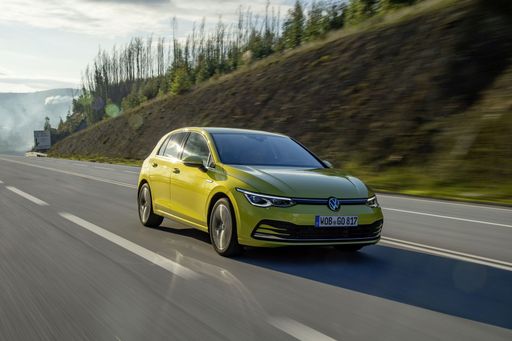 @ Volkswagen AG / VW Media
@ Volkswagen AG / VW Media
VW Golf
Hyundai Kona
The Hyundai Kona wears its personality on the outside with bold styling and sprightly handling that turns city driving into something a little more fun than a commute. It blends practical space, modern tech and sensible running costs into a compact, stylish package — a smart pick if you want flair without paying luxury prices.
details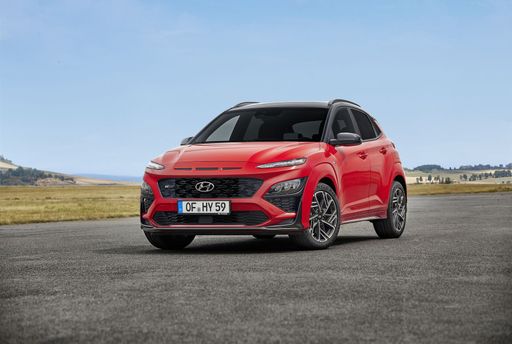 @ Hyundai Motor Company
@ Hyundai Motor Company
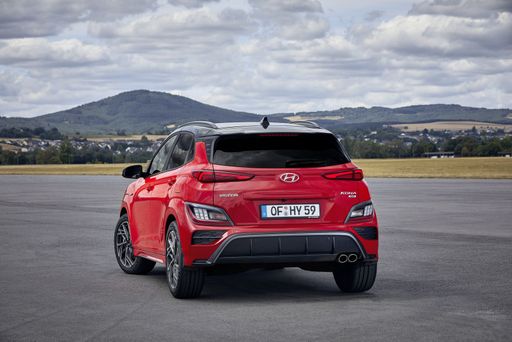 @ Hyundai Motor Company
@ Hyundai Motor Company
 @ Hyundai Motor Company
@ Hyundai Motor Company
 @ Hyundai Motor Company
@ Hyundai Motor Company
VW Golf
The VW Golf remains the everyman’s favourite — cleverly balanced, composed and just posh enough to feel grown-up without pretending to be something it’s not. It slips through town and eats up longer trips with a refined cabin, practical layout and a kindly, capable character that turns everyday driving into something a little bit special.
details @ Volkswagen AG / VW Media
@ Volkswagen AG / VW Media
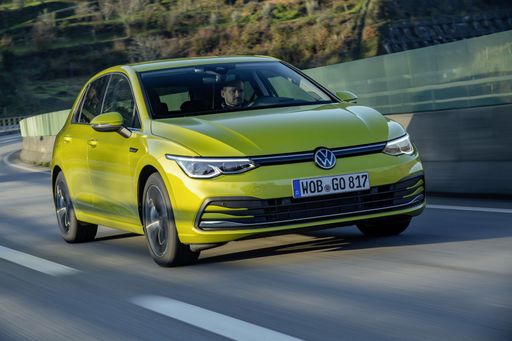 @ Volkswagen AG / VW Media
@ Volkswagen AG / VW Media
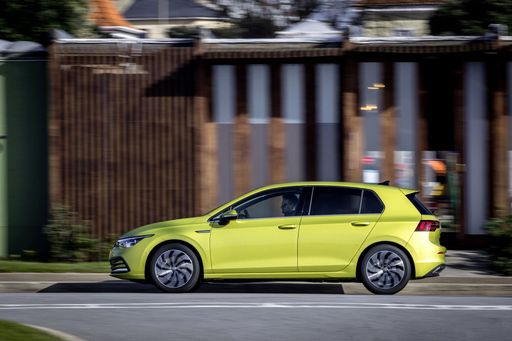 @ Volkswagen AG / VW Media
@ Volkswagen AG / VW Media
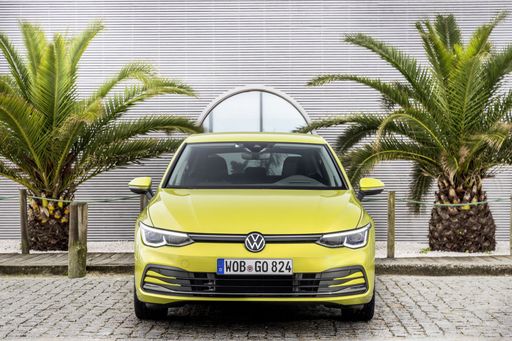 @ Volkswagen AG / VW Media
@ Volkswagen AG / VW Media
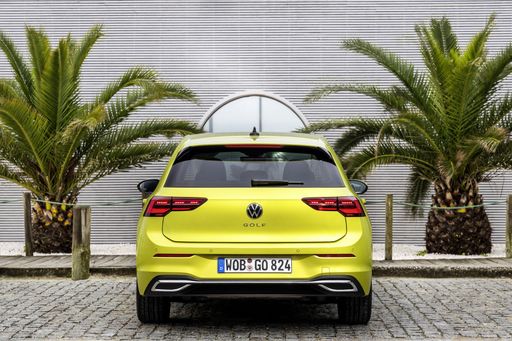 @ Volkswagen AG / VW Media
@ Volkswagen AG / VW Media
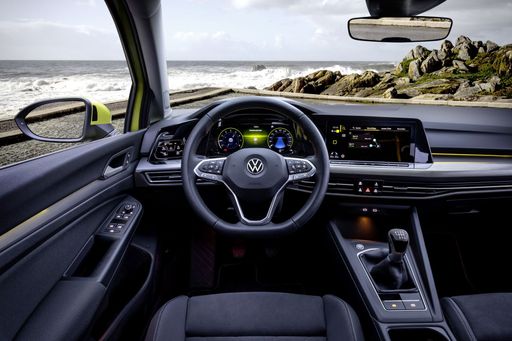 @ Volkswagen AG / VW Media
@ Volkswagen AG / VW Media
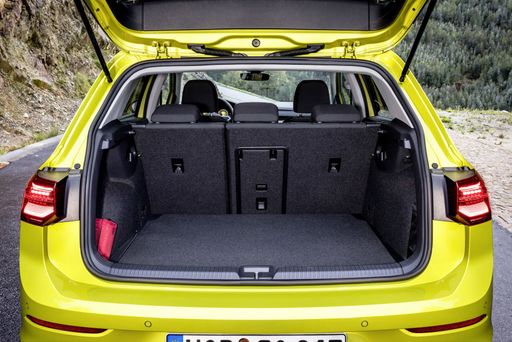 @ Volkswagen AG / VW Media
@ Volkswagen AG / VW Media
 @ Hyundai Motor Company
@ Hyundai Motor Company
|
 @ Volkswagen AG / VW Media
@ Volkswagen AG / VW Media
|
|
|
|
Costs and Consumption |
|
|---|---|
|
Price
23100 - 41600 £
|
Price
25200 - 47600 £
|
|
Consumption L/100km
4.6 - 7 L
|
Consumption L/100km
1.1 - 8.1 L
|
|
Consumption kWh/100km
14.6 - 16.8 kWh
|
Consumption kWh/100km
-
|
|
Electric Range
377 - 514 km
|
Electric Range
131 - 143 km
|
|
Battery Capacity
1.3 - 65.4 kWh
|
Battery Capacity
19.70 kWh
|
|
co2
0 - 163 g/km
|
co2
25 - 184 g/km
|
|
Fuel tank capacity
38 - 47 L
|
Fuel tank capacity
40 - 55 L
|
Dimensions and Body |
|
|---|---|
|
Body Type
SUV
|
Body Type
Hatchback
|
|
Seats
5
|
Seats
5
|
|
Doors
5
|
Doors
5
|
|
Curb weight
1370 - 1773 kg
|
Curb weight
1307 - 1662 kg
|
|
Trunk capacity
466 L
|
Trunk capacity
273 - 381 L
|
|
Length
4350 - 4385 mm
|
Length
4282 - 4296 mm
|
|
Width
1825 mm
|
Width
1789 mm
|
|
Height
1580 - 1585 mm
|
Height
1454 - 1483 mm
|
|
Max trunk capacity
1300 L
|
Max trunk capacity
1129 - 1237 L
|
|
Payload
420 - 490 kg
|
Payload
438 - 508 kg
|
Engine and Performance |
|
|---|---|
|
Engine Type
Electric, Petrol, Full Hybrid
|
Engine Type
Petrol MHEV, Petrol, Diesel, Plugin Hybrid
|
|
Transmission
Automatic, Manuel
|
Transmission
Automatic, Manuel
|
|
Transmission Detail
Reduction Gearbox, Manual Gearbox, Dual-Clutch Automatic
|
Transmission Detail
Dual-Clutch Automatic, Manual Gearbox
|
|
Drive Type
Front-Wheel Drive, All-Wheel Drive
|
Drive Type
Front-Wheel Drive, All-Wheel Drive
|
|
Power HP
115 - 218 HP
|
Power HP
116 - 333 HP
|
|
Acceleration 0-100km/h
7.8 - 11.9 s
|
Acceleration 0-100km/h
4.6 - 10.2 s
|
|
Max Speed
162 - 210 km/h
|
Max Speed
202 - 270 km/h
|
|
Torque
200 - 265 Nm
|
Torque
220 - 420 Nm
|
|
Number of Cylinders
3 - 4
|
Number of Cylinders
4
|
|
Power kW
85 - 160 kW
|
Power kW
85 - 245 kW
|
|
Engine capacity
998 - 1598 cm3
|
Engine capacity
1498 - 1984 cm3
|
General |
|
|---|---|
|
Model Year
2024 - 2025
|
Model Year
2024 - 2025
|
|
CO2 Efficiency Class
A, D, C, E, F
|
CO2 Efficiency Class
D, F, G, C, B
|
|
Brand
Hyundai
|
Brand
VW
|
Is the Hyundai Kona offered with different drivetrains?
Available configurations include Front-Wheel Drive or All-Wheel Drive.
The prices and data displayed are estimates based on German list prices and may vary by country. This information is not legally binding.
